Return to MODULE PAGE
Extended Metaphors
Clay Beckner: Author
Metaphors often extend far beyond a single proposition. In a particular discussion (or even over an extended period in a given culture) metaphors may be carried out so that one thing is described in considerable detail using vocabulary from another domain altogether. In terms of simulation, this means that the metaphorical simulation is carried out extensively so that we pretend in numerous ways that one thing really is another thing. For instance, the discussion of familiarizing metaphors lists a number of the ways in which time is spoken of as if it really is money in our language. These extended metaphors are also very common in science: when describing photons, for instance, a scientist might leap back and forth between several sets of elaborate simulations. In one context, photons might be assigned many of the properties of waves, and in another context, many of the properties of particles.
Extended metaphors--even in science--often involve the personification objects or ideas. By applying vocabulary usually reserved for humans to non-human things, we pretend that feuding subatomic particles, vacuum-hating Nature, or obstinate laser printers have human characteristics. Let's consider PT's approach to one such extended, 'animistic' metaphor, in which like subatomic charges 'hate' one another, and opposite charges 'love' one another. Suppose that we've given PT the following metaphorical propositions:
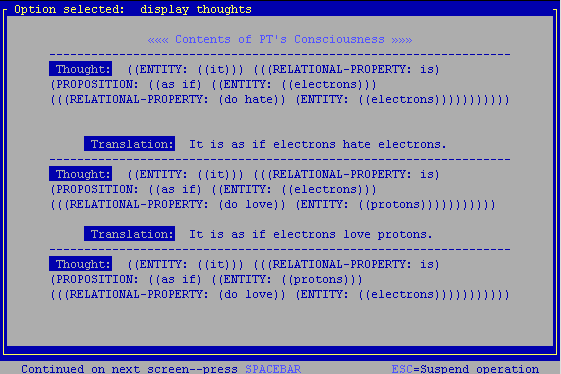
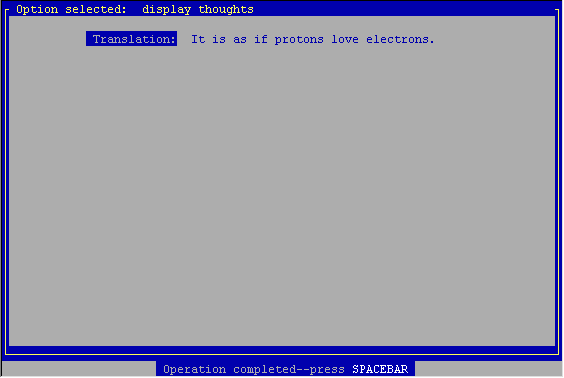
We'll also need to tell PT some literal facts about what 'loving' and 'hating' mean. To do this, it's best to change PT's knowledge of meaning relationships using the 'modify abilities' command. This command gives us the best access to defining how words relate to one another for PT; we'll tell her two very general things about love and hate:
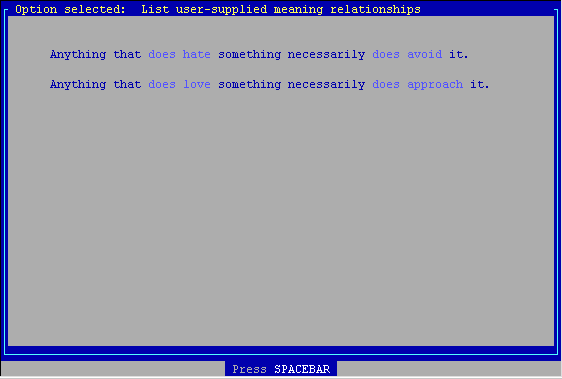
Now PT can begin to draw conclusion. Based on our metaphorical input, PT deduces (with some prodding) that (1) electrons avoid other electrons:
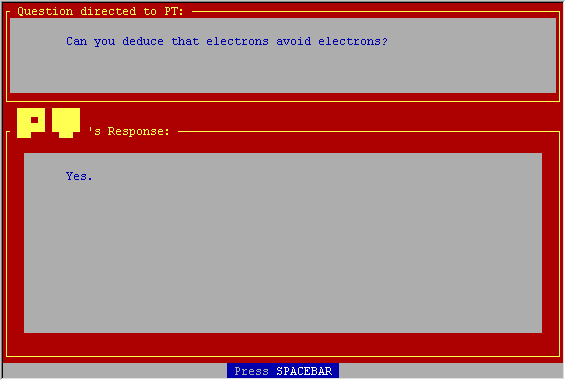
(2) that electrons approach protons:
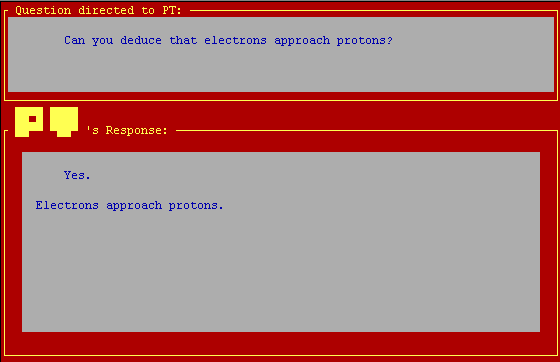
and (3) that protons approach electrons:
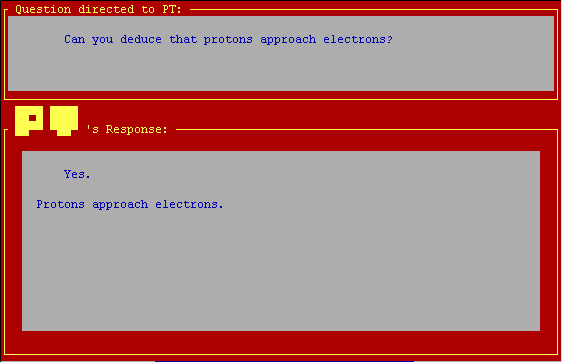
Of course, theoretically the love/hate metaphor could be extended even further using PT (e.g., protons gathered in the nucleus have made peace with one another, neutrons are indifferent toward everyone, etc.). The challenge in making some of these extensions, though, lies in always making the logical connections explicit. That is, if we wish to express the same ideas using different language (for example, using 'making peace' or 'getting along together' as a different way of describing 'love') these linguistic connections would need to be made explicit using new meaning relationships.
In this example, the idea behind giving PT knowledge of love and hate in the general sense, using new meaning relationships, was to approximate the processes of human metaphorical interpretation as closely as possible. That is, our goal is to make PT draw from her knowledge in one domain (that of human love/hate interactions) and apply it to a new domain (the behavior of subatomic particles). Admittedly, PT does not 'understand' what it means to love or hate from one or two meaning relations. But PT's simple approach at least begins to model natural language speakers' ability to make links between one interconnected set of meanings and an altogether different set.




